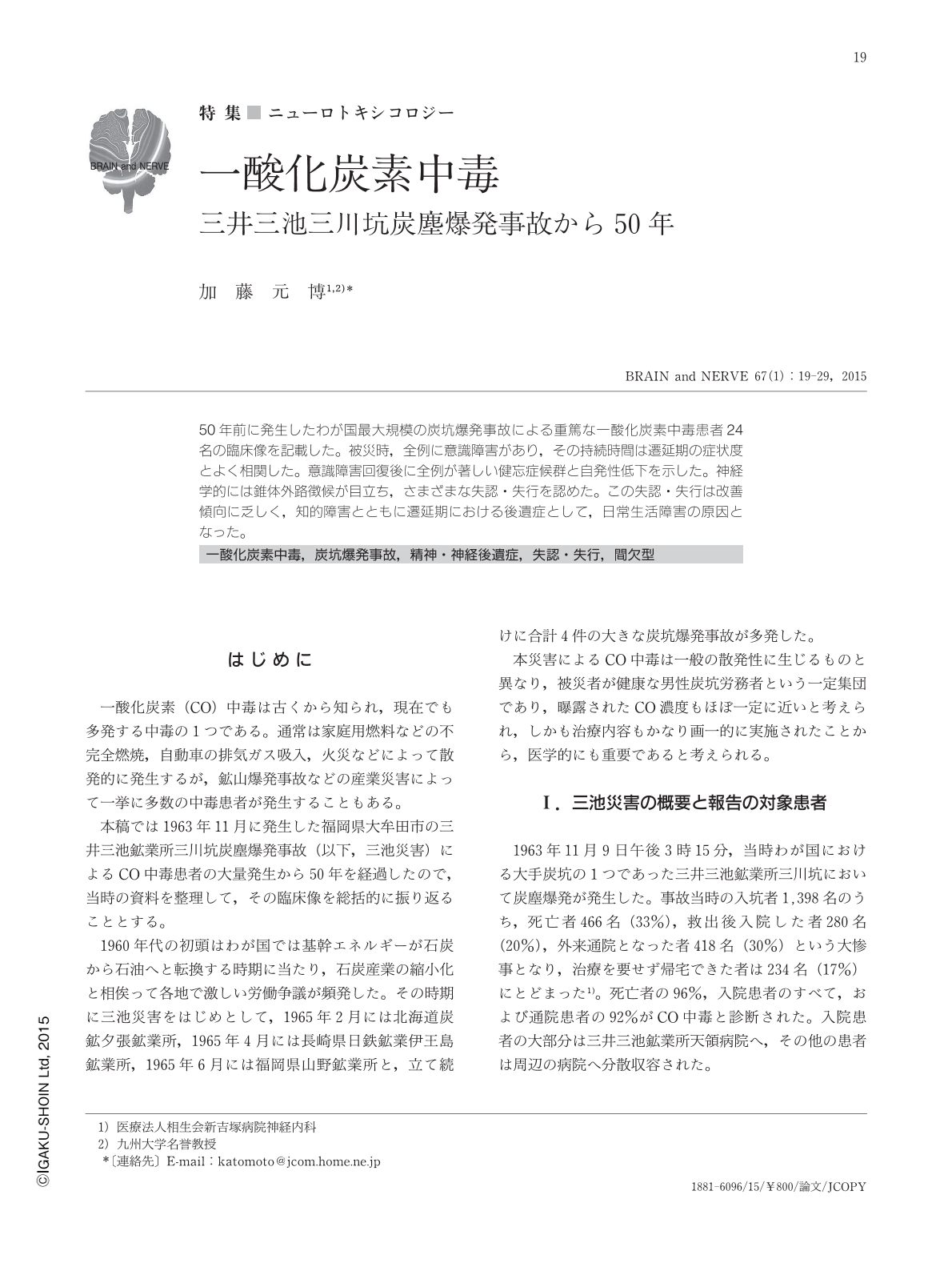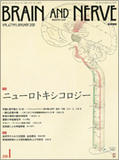Japanese
English
- 有料閲覧
- Abstract 文献概要
- 1ページ目 Look Inside
- 参考文献 Reference
50年前に発生したわが国最大規模の炭坑爆発事故による重篤な一酸化炭素中毒患者24名の臨床像を記載した。被災時,全例に意識障害があり,その持続時間は遷延期の症状度とよく相関した。意識障害回復後に全例が著しい健忘症候群と自発性低下を示した。神経学的には錐体外路徴候が目立ち,さまざまな失認・失行を認めた。この失認・失行は改善傾向に乏しく,知的障害とともに遷延期における後遺症として,日常生活障害の原因となった。
※「Fig. 9 一酸化炭素中毒間欠型の推定発生機序」は,権利者の意向等により冊子体のみの掲載になります.
Abstract
Clinical features of carbon monoxide poisoning have been described in 24 victims of an intense explosion accident of the Mitsui-Miike Mikawa coal mine in Japan 50 years ago; these victims were admitted to the Kyushu University Hospital as they suffered from severe poisoning. In the early stage of poisoning, all victims showed disturbed state of consciousness, varying in duration from 5.5 hours to 3 months, and the duration of unconsciousness was closely correlated to the clinical severity in the late stage. Some of the severely poisoned patients showed a transient stage of apallic syndrome. After recovery from unconsciousness, all patients presented with severe amnestic syndrome and loss of initiative. Neurologically, the extrapyramidal signs were prominent in the early stage, which gradually improved in the late stage. Variable types of agnosia and apraxia were apparent in some of the severely and moderately poisoned patients in the late stage, with prominent Gerstmann syndrome and visual-visuospatial agnosias. Since these signs showed poor improvement, the agnosia and apraxia, as well as impaired intellectual ability, remained as a sequela of the poisoning, and were one of the major causes of deficits of the patients in their daily life activities in the late stage.

Copyright © 2015, Igaku-Shoin Ltd. All rights reserved.


